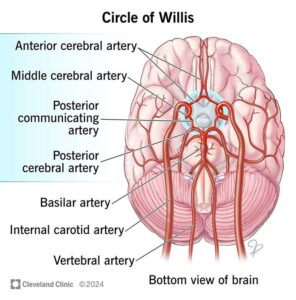“Discover why regular safety performance reviews prevent incidents, boost culture & compliance—download our audit checklist to start improving today!”
Introduction
Health and safety performance reviews aren’t just compliance checkboxes—they’re the heartbeat of a proactive, resilient workplace. By regularly evaluating both leading (proactive) and lagging (outcome-based) indicators, organizations identify risks before they cause harm and continuously improve their safety systems. For a creative twist, explore what lies beneath the surface in this imaginative piece on Heath Ledger without his Joker persona, which offers a metaphor for uncovering hidden layers: What Lies Beneath the Madness. Think of your safety review process the same way—revealing what lies beneath.
1. The Essential Benefits of Regular Reviews
🔹 1.1 Ensure Legal Compliance & Risk Reduction

Standard frameworks like ISO 45001 and OSHA’s regulations emphasize both leading and lagging indicators as critical for complianceforbes.com+15safetydocs.safetyculture.com+15safetyculture.com+15.
🔹 1.2 Enable Proactive Hazard Identification
Monitoring near‑misses, inspections, training, and maintenance helps detect hazards early, avoiding costly incidents.
🔹 1.3 Strengthen Safety Culture & Morale
A positive safety culture—built on employee involvement and open communication—is essential for sustainable safety improvements.
🔹 1.4 Improve Productivity & Reduce Costs
Lower incident rates mean fewer disruptions, lower insurance costs, and a more efficient workforcesafetydocs.safetyculture.com.
2. Key Components of Effective Reviews
2.1 Leading & Lagging Indicators
Measure leading indicators (like training completion, inspection rates, hazard reports) alongside lagging indicators (TRIR, DART, lost-time incidents) for a full picturehsestudyguide.com+1safetydocs.safetyculture.com+1.
2.2 Safety Audits & Checklists
Structured audit checklists ensure consistent reviews: equipment inspections, behavior observations, near-miss follow-up.
2.3 KPI Alignment
Track essential KPIs—both proactive and outcome-focused—to monitor performance effectivelyhsseworld.com+10safetydocs.safetyculture.com+10forbes.com+10.
2.4 Data Collection & Analytics
Effective systems use data from audits, sensors, and digital logs to analyze and spot trendsforbes.com.
2.5 Employee Engagement
Facilitate participation through feedback loops, involvement in audits, and open forums to encourage a culture of safety ownershipforbes.com+15forbes.com+15forbes.com+15.
3. Step-by-Step Review Process
3.1 Pre-review Preparation
- Define review objectives and KPIs (e.g., safety training rates, TRIR)
- Gather incident logs, near-miss reports, inspection history
3.2 Audit Execution
- Perform walkthroughs and evaluate behaviors
- Interview staff, document near-miss incidents, and use digital tools for accuracyhsestudyguide.comforbes.com+2safetydocs.safetyculture.com+2safetyculture.com+2
3.3 Data Analysis
- Compare leading vs lagging trends
- Identify anomalies, e.g., rising near-miss reports but lower training ratessafetydocs.safetyculture.com
3.4 Action Planning
- Assign corrective actions with OKRs, roles, and timelines
- Ensure management sponsorship for accountability
3.5 Follow-Up & Re-evaluation
- Monitor completion and analyze follow-up data
- Adjust future review cycles accordingly
4. Tools, Templates & Resources
4.1 Sample Audit Checklist
Sections on incident review, training status, and demonstrable employee engagement.
4.2 KPI Dashboard Template
A visual tracker in Excel or BI tool for TRIR, near-misses, training rates.
4.3 .gov & .edu Resources
- OSHA’s guidance on safety program evaluationsheilds.org+2walkersafety.co.uk+2angolatransparency.blog+2ashdownsafety.co.uk
- ISO 45001 overview at Wikipediaforbes.com+15en.wikipedia.org+15forbes.com+15
- Safety culture definitions from Wikipediaforbes.com+11en.wikipedia.org+11forbes.com+11
4.4 Insights from Forbes
- Forbes experts highlight fostering psychological safety and culture through open communicationforbes.com+8forbes.com+8forbes.com+8.
5. Integrating PDCA for Continuous Improvement
Utilize the PDCA model:
- Plan: Define objectives/KPIs
- Do: Implement audits and training
- Check: Review performance with data
- Act: Adjust systems for continuous improvement
The HSE endorses the PDCA cycle as critical for effective safety leadershipashdownsafety.co.ukforbes.com+15hse.gov.uk+15en.wikipedia.org+15.
6. Common Challenges & Solutions
| Challenge | Solution |
|---|---|
| Inconsistent data collection | Digitize checklists, use centralized tools |
| Poor employee participation | Incorporate feedback, use workshops, share results |
| Over-focus on lagging metrics | Use balanced indicators (leading + lagging) |
| Lack of management support | Present ROI: cost savings, compliance, culture improvements |
FAQ
Q1: Why are regular health & safety performance reviews needed?
They uncover hidden risks, support compliance, reinforce safety ownership, and drive culture.
Q2: How often should reviews occur?
Monthly audits, quarterly KPI checks, and annual comprehensive reviews are recommended.
Q3: Which KPIs should I track?
Include leading (near-miss reports, audits) and lagging (TRIR, DART) indicatorsen.wikipedia.org+3sheilds.org+3forbes.com+3hsestudyguide.com+1safetydocs.safetyculture.com+1.
Q4: How can employees be involved?
Enable reporting, include them in audits, gather survey feedback, and highlight contributions.
Q5: What tools help conduct reviews effectively?
Digital checklist apps, KPI dashboards, and models like ISO 45001 are invaluable for accuracy and tracking.
Conclusion
Regular reviews of health and safety performance serve as a strategic lever—driving safety culture, minimizing risks, and enhancing compliance. Use leading/lagging indicators, involve your workforce, apply PDCA, and leverage digital tools and authoritative resources to build a robust safety system. Begin your audit journey today with our downloadable checklist and KPI template!




